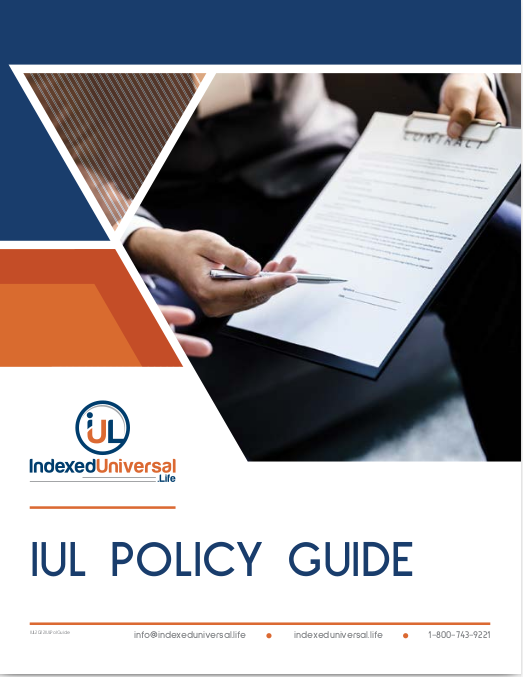
Key Takeaways
-
Life insurance provides guaranteed financial protection and stability for your loved ones, while stocks offer growth potential but higher volatility.
-
Balancing both life insurance and stock investments can provide comprehensive financial security, combining protection with growth opportunities.
Understanding the Essentials: Protection vs. Growth
When planning your financial future, the decisions you make today shape the security and opportunities you’ll have tomorrow. Among these decisions, choosing between life insurance and investing in stocks can be particularly challenging. Both options can significantly impact your finances—but they play different roles. Let’s explore four key differences you should carefully consider when weighing life insurance against stocks.
1. Stability and Risk: The Certainty Factor
Life Insurance: Stability You Can Count On
Life insurance is designed to give you peace of mind through stability. You pay regular premiums, typically monthly or annually, over a specified duration—often decades—to secure a predetermined payout, known as the death benefit, for your beneficiaries upon your passing.
-
Premiums remain predictable and stable over the term of the policy.
-
Your beneficiaries are guaranteed to receive the policy’s death benefit, provided premiums are maintained.
-
Some life insurance policies, such as whole life or universal life, even offer cash value accumulation, allowing you to borrow against your policy or receive financial returns.
Stocks: Higher Risk, Higher Potential
On the flip side, investing in stocks means you’re taking on a more dynamic financial ride. Stocks are shares of ownership in publicly traded companies, offering you growth potential through increases in stock prices or dividend payouts.
-
Returns fluctuate significantly based on market conditions, economic factors, and company performance.
-
There is potential for significant gains, but losses are equally possible.
-
Stocks generally require ongoing monitoring, analysis, and active decision-making compared to life insurance.
If stability is a priority for you, life insurance provides guaranteed financial protection. If you’re comfortable with risk for potentially higher returns, stocks might be your choice.
2. Purpose and Usage: Long-Term Security vs. Wealth Building
Life Insurance: Protection First, Investment Second
Life insurance primarily serves as a protective measure, securing the financial future of your dependents and loved ones if you’re no longer there to support them.
-
Life insurance ensures immediate financial support to your family for funeral costs, mortgage payments, education, and daily expenses.
-
Certain policies like whole or universal life offer additional financial advantages through cash value, providing some wealth accumulation and liquidity.
-
Policies generally have a clear and defined long-term role in financial planning.
Stocks: Growth-Oriented and Flexible
Stocks are typically geared toward wealth creation and flexibility rather than immediate protection.
-
Investing in stocks aims for wealth growth, retirement savings, college funds, or long-term financial objectives.
-
You can adjust your stock portfolio according to market trends, your personal goals, and economic outlook.
-
Unlike life insurance, you can liquidate stocks fairly quickly if you need access to funds, though timing matters significantly due to market volatility.
Choose life insurance if protecting loved ones and ensuring their financial stability is paramount. Stocks work best when wealth-building, flexible financial planning, and adaptability are your goals.
3. Cost Factors: Predictability vs. Variable Expenses
Life Insurance: Predictable Premiums
Life insurance costs are generally straightforward. Premiums are determined by factors like your age, health status, policy type, and coverage amount. Once set, these premiums typically remain consistent throughout the policy’s duration.
-
Term policies are usually less expensive, with premiums fixed for the policy duration (often 10, 20, or 30 years).
-
Permanent policies (whole or universal) often have higher premiums but offer lifelong coverage and a cash value component.
Stocks: Variable Costs and Fees
Stocks can come with varying costs, including brokerage fees, trading commissions, and expense ratios if you’re investing in funds or ETFs.
-
These costs can fluctuate based on how frequently you trade, the platforms you use, and the type of investments you select.
-
There are no guaranteed outcomes—your total returns could be heavily impacted by market conditions and unexpected fees.
If predictable budgeting and financial certainty matter to you, life insurance might align better with your priorities. Stocks require ongoing attention to costs and market fluctuations.
4. Tax Benefits: Fixed Advantages vs. Potential Gains
Life Insurance: Built-In Tax Advantages
Life insurance policies offer specific tax benefits that can be particularly appealing:
-
Death benefits are generally paid tax-free to your beneficiaries.
-
Cash value accumulation in permanent policies grows tax-deferred, meaning taxes are only paid when you withdraw more than your premiums.
-
Loans taken against life insurance policies are typically not taxable events unless the policy lapses or is surrendered.
Stocks: Potential for Higher Taxes, But Also Flexibility
Investing in stocks involves different tax implications:
-
Gains from stock investments are subject to capital gains taxes, which vary depending on how long you’ve held the asset (short-term vs. long-term).
-
Dividend income may also be taxable annually, even if reinvested.
-
Certain retirement accounts (like IRAs or 401(k)s) can offer tax advantages if stocks are held within these accounts.
Life insurance has clear, immediate tax advantages, ideal for wealth transfer and financial protection. Stocks can offer significant tax advantages within specialized retirement accounts but require careful management to minimize annual taxes.
Finding Your Ideal Balance: Diversification Matters
Rather than thinking of life insurance and stocks as mutually exclusive, consider integrating both into your financial plan. Diversifying between guaranteed protection and potential growth can optimize your financial health over the long term.
-
Balanced approach: Life insurance offers stability and guaranteed protection, ensuring your loved ones’ security. Stocks contribute growth potential and flexibility, enhancing wealth accumulation.
-
Customized planning: The ideal mix depends on your age, financial responsibilities, risk tolerance, and long-term objectives.
-
Regular review: Revisit your strategy periodically (every 3–5 years or after major life changes) to ensure your financial plan aligns with your evolving needs and market conditions.
Making Smart Choices for Your Financial Future
Life insurance and stocks each offer distinct benefits and challenges. Understanding these key differences can empower you to make more informed decisions, aligning your investment strategy with your broader life goals. Remember, it’s not necessarily about choosing one over the other—rather, it’s about determining how each fits best into your unique financial scenario.
To ensure your decisions match your financial needs, goals, and risk profile, consider consulting a qualified financial advisor who can guide you through the process and help you create an optimal financial strategy tailored just for you.





